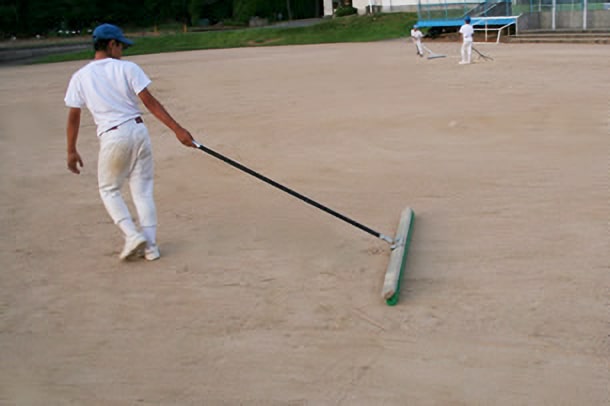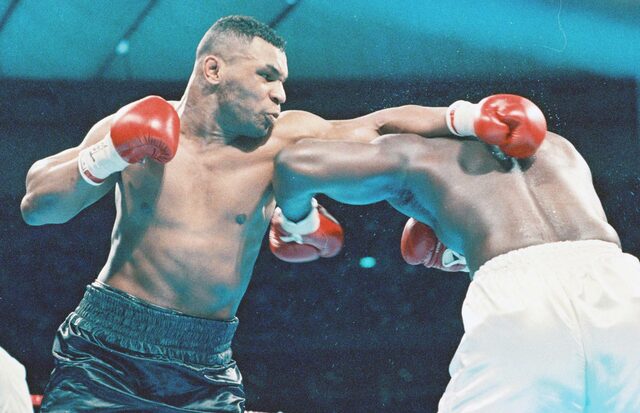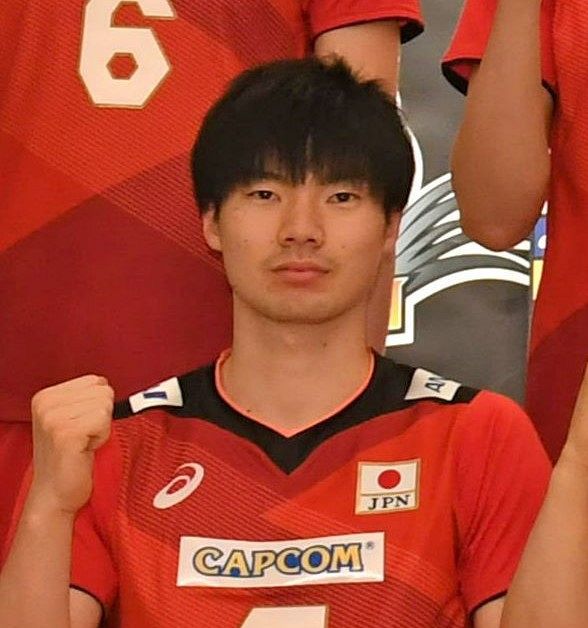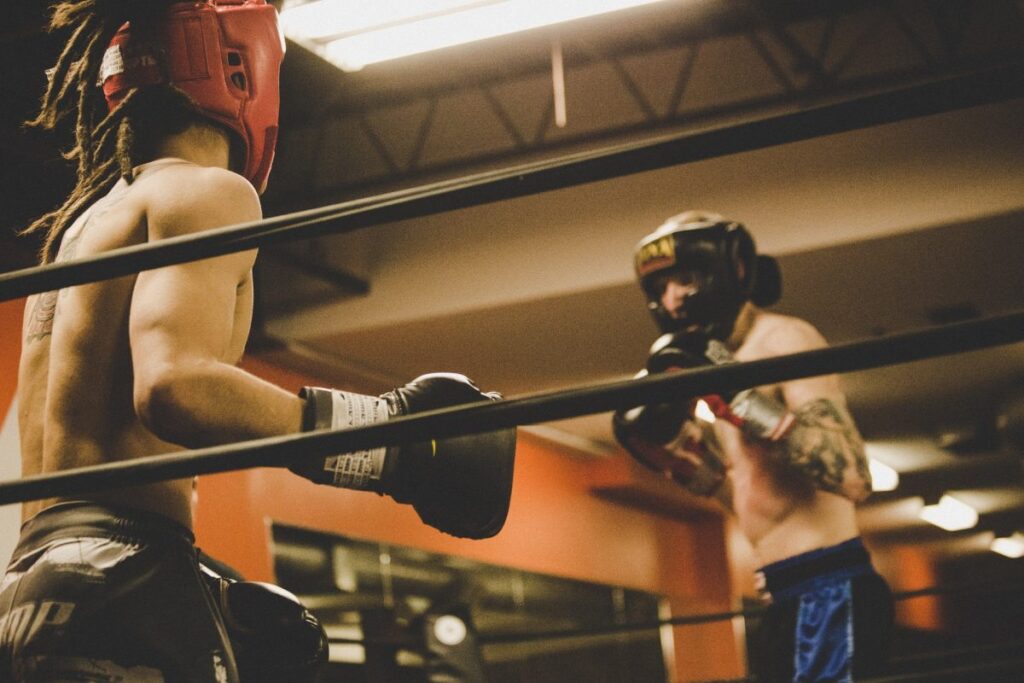
In Kendo, “1000 practice swings” has more meaning than just a number.
This challenge will help you improve your technique, strengthen your physical strength, and above all, train your mental strength.
This challenge, which everyone who studies kendo has heard of at least once, has endless possibilities for promoting growth as a swordsman.
However, before starting this challenge, many swordsmen have questions about the specific effects, the correct way to proceed, and above all, the time required to complete 1000 swords.
In this guide, we will answer all your questions, from how to prepare for attempting 1000 practice swings in Kendo, to effective practice methods, and an estimate of the amount of time it will take to practice.
Through this challenge, you will not only be able to improve your kendo techniques, but you will also be able to greatly grow as a swordsman.
The journey to mastering the art of kendo begins with one practice swing at a time.
目次
- 1 Introduction: The importance of 1000 Kendo practice moves
- 2 Effect of 1000 practice swings
- 3 Preparation for 1000 practice swings
- 4 correct practice swing form
- 5 How to complete 1000 practice swings
- 6 Time and pace setting for 1000 practice swings
- 7 Cool down and care after practicing
- 8 Application to daily practice
- 9 Summary: Growth through the challenge of 1000 practice swings
Introduction: The importance of 1000 Kendo practice moves
In Kendo training, practice swings are the most basic, and the challenge of “1000 practice swings” has a special meaning for a swordsman.
This number has a deep meaning that is not only used to hone one’s skills, but also to encourage spiritual growth.
Here, we will delve into the impact that the challenge of 1000 practice swings has on Kendo technique and spirit.
Influence on Kendo technique
By performing 1000 practice swings, the first thing that becomes obvious is the improvement in technique.
By carefully performing each swing, you will improve the accuracy of your strikes, and naturally learn the basics of Kendo, such as posture stability, swing speed, and power transmission methods.
Also, through the process of repetition, your body naturally learns the correct movements, and your skills are refined unconsciously.
Effect on the psyche
Practicing 1000 practice swings, which may seem monotonous at first glance, is actually the best opportunity to test a swordsman’s mental strength.
As you continue to take on challenges, you will be required to maintain concentration and improve your patience, and these mental elements will have a positive impact not only on Kendo but also on your daily life.
In addition, the sense of accomplishment that comes from overcoming a struggle with oneself is directly linked to increased self-confidence and motivates one to take on further challenges.
The significance of continuous challenges
Practicing 1000 practice swings is not a one-time challenge. By repeating this process regularly, you will experience growth both technically and mentally.
In addition, through practice, you will deepen your understanding of Kendo and find a path to personal growth as a swordsman.
Achieving 1000 practice swings is not just a pursuit of numbers, but an eternal challenge in Kendo.
Not only the technical results obtained through this challenge, but also the spiritual growth and inner fulfillment that will become the light that illuminates the path to becoming a true swordsman.

Effect of 1000 practice swings
1000 practice swings has a deeper value in Kendo training than simply pursuing numbers.
This grueling challenge offers remarkable benefits on three fronts: physical, technical, and mental.
We will also consider why the number “1000” is important and the significance behind it.
Effects on physical strength
Performing 1000 practice swings requires extremely high physical strength.
Through this process, your endurance and strength will be built at the same time. In particular, the muscles in your shoulders, arms, hips, and legs are used evenly, so you will develop the balanced physical strength necessary for Kendo.
You can also expect to improve your cardiovascular function, and continuous practice will improve your overall body condition.
Technical effects
Suburi is the basic practice for acquiring the correct form of striking. Through 1000 mass repetitions, the accuracy of the technique will naturally improve.
In particular, there is a noticeable improvement in swing speed, accuracy, and sword handling.
In addition, through repetition, you will be able to make fine adjustments to your movements, allowing you to acquire more sophisticated techniques.
Mental effects
1000 practice swings is also a test of a swordsman’s mental strength. Completing this challenge requires great concentration and perseverance and trains these mental qualities.
In addition, in the process of overcoming battles with oneself, one develops confidence and self-efficacy, and acquires mental strength.
Why 1000 pieces?
The number “1000” is a symbolic number that indicates a certain goal not only in Kendo but also in traditional Japanese training methods.
This number has the meaning of spiritual growth and challenge that goes beyond simply technique and physical strength.
By setting a specific goal of 1,000, challengers can continue their efforts toward a clear goal, and the sense of fulfillment when they achieve it is immeasurable.
The challenge of 1000 practice swings is an important process that not only improves your kendo technique but also promotes your growth as a swordsman.
The three-dimensional growth you will gain through this practice – physical strength, technique, and spirit – will be useful not only in kendo but in many other aspects of life.

Preparation for 1000 practice swings
Before attempting 1000 practice moves, which is Kendo training, proper preparation is necessary.
This preparation includes preparing the necessary equipment, being in the right frame of mind, and warming up to get your body in top condition.
Here, we will explain in detail how to prepare before tackling 1000 practice swings.
Necessary equipment
- Kendo gi and hakama : Prepare a kendo gi and hakama that are comfortable and easy to move in. Since your body moves a lot during practice swings, it is important that there are few restrictions due to clothing.
- Shinai or wooden sword : Prepare a Shinai or wooden sword to use for practice swings. By choosing a weight and length that suits you, you will be less likely to get tired even during long periods of practice.
- Gloves : Consider using gloves to prevent your hands from hurting during long practice swings. Hand protection is especially important when using a new Shinai or Bokken.
mindset
- Goal setting : Keep a specific goal of 1000 books in mind and strengthen your will to achieve it. Also, improve the quality of your practice by giving meaning to each swing.
- Maintaining concentration : Maintaining concentration can be a challenge when practicing for long periods of time. It is important to think of ways to stay focused in advance.
- Perseverance : There will be moments along the way when you feel like giving up. However, the growth and sense of accomplishment that comes from overcoming such difficulties is worth it.
warming up
- Full-body stretches : Perform full-body stretches to keep your muscles flexible and reduce the risk of injury. In particular, be sure to stretch the areas involved in practice swings, such as your shoulders, arms, hips, and legs.
- Light aerobic exercise : Warm up by doing a few minutes of light aerobic exercise, such as jogging or skipping, to raise your body temperature and improve blood flow. This allows you to prepare your body in the optimal condition for full-fledged practice swings.
By making these preparations, you will be able to perform the 1000 practice swing challenge safely and effectively.
Working consciously from the preparation stage will be the first step to success.

correct practice swing form
In kendo, practice swings are not just about swinging a bamboo sword, but the key to improving your technique is to do it with the correct form.
In order to perform effective practice swings, it is important to understand the basic posture and technical points and put this into practice.
The correct practice swing form is explained in detail below.
Basic posture
- Correct foot position : Place your feet about shoulder-width apart, with your left foot slightly behind you. Distribute your weight evenly between your feet and keep your knees slightly bent.
- Lower back position : Lower your lower back and keep your back straight. If your hips are too high, your balance will be poor, and if your hips are too low, it will be difficult to move.
- Correct grip : Grip the end of the handle with your left hand, and place your right hand near the center of the handle. The grip should be firm but not too tight.
Technical points
- Swinging motion : When swinging the shinai, extend both elbows so that the tip of the shinai points upwards and backwards. At this time, be careful not to put too much pressure on your shoulders.
- Downward motion : When launching, swing the shinai straight down and hit the target point accurately. When striking down, make sure that the tip of the shinai passes in a straight line.
- Posture at the end of the strike : After striking down, hold the shinai in the appropriate position. At this time, keep your right hand in front of your abdomen and your left hand on the center line of your body to maintain a firm posture.
Ongoing considerations
- Breathing : When performing practice swings, please keep your breathing regulated and try not to strain too much. By synchronizing the downward movement and breathing, you can practice with a good rhythm.
- Concentration : Concentrate on each swing and be aware of correct form. In particular, when you get tired, your form tends to be distorted, so you need to be careful.
By learning the correct practice form, you will solidify the foundation of your kendo techniques, which will lead to further technical improvements.
It is important to keep these points in mind during each practice.

How to complete 1000 practice swings
1000 practice swings is a major challenge in Kendo.
A systematic approach is essential to achieving this goal.
Breaking up your practice, taking appropriate breaks, and thinking about pacing are the keys to success.
Here, we will introduce some advice for completing 1000 practice swings efficiently.
How to divide exercises
- Divide into sets : It is difficult to shake 1000 pieces at once. For this reason, we recommend that you try breaking it up into 10 sets of 100 or 20 sets of 50. This reduces the burden on each session and makes it easier to continue.
- Set your goals in stages : Instead of aiming for 1000 from the beginning, one way is to gradually increase the number, starting with 500 on the first day, then 750. This step-by-step approach will keep you motivated to reach your ultimate goal.
How to take breaks
- Adequate rest time : Take at least 1-2 minutes of rest between each set. During your breaks, take deep breaths to relax and improve your focus for the next set.
- The importance of staying hydrated : Remember to stay hydrated during your breaks. It is important to drink plenty of water as it is easy to become dehydrated when practicing for long periods of time.
Advice on pacing
- Start slowly : At the beginning of your practice, start by shaking slowly while checking your form. At this time, do not use excessive force and try to move correctly.
- Gradually increase your pace : Once you get used to it, gradually increase your pace. However, be careful not to get fatigued or have poor form, and try to keep within your limits.
- Concentrate on form towards the end: As you approach the end of the 1000, fatigue becomes noticeable. During this period, prioritize correct form over pace and aim to achieve your goals while avoiding injury.
In order to complete 1000 practice swings, you need not only physical strength but also mental strength.
Use the above method as a reference, challenge yourself at a pace that suits you, and achieve this big goal.
Your small daily efforts will eventually lead to big results.

Time and pace setting for 1000 practice swings
The challenge of 1000 practice swings in Kendo requires not only mental preparation but also time planning.
We will explain how long it takes to complete 1000 practice swings and how to set your pace during the process.
Average time to complete
The time it takes to complete 1,000 practice swings varies greatly depending on the individual’s physical strength, skill level, and the pace they set.
However, as a general guideline, it is a good idea to aim for about 2 to 3 seconds per video.
Based on this calculation, it will take approximately 2000 to 3000 seconds, or approximately 33 to 50 minutes, to complete 1000 runs.
In addition to this, you need to consider your break time.
proper pacing
- Initial pace setting : At the beginning of practice, start at a slow pace to check your form and get your body used to it. For the first 100 or so, focus on your form and warming up your body.
- Mid-pace adjustment : Once your body gets used to it, gradually increase your pace. However, if you suddenly increase your speed too much, fatigue will accumulate, so always check your physical strength and condition and adjust accordingly.
- Slowing down of pace towards the end : As you approach the end of the 1000 runs, you will start to feel exhausted and lose concentration. During this time, it’s a good idea to slow down again and focus on maintaining accurate form.
How to take breaks
- We recommend taking at least a 1-2 minute break after every 100 or 200 practice swings. During your breaks, take deep breaths, relax, and stay hydrated. You can also stretch as needed to relieve muscle tension and prepare for the next set.
Self-control is the key to completing 1000 practice swings.
By setting the right pace and taking breaks, you’ll be able to face this challenge both physically and mentally.
With continuous effort and the right approach, you can get the joy of achieving this big goal.

Cool down and care after practicing
After completing the intensive practice of 1000 practice swings in Kendo, it is very important to cool down and take care of your body properly.
If you neglect this step, you increase the risk of muscle soreness and injury, which will affect your next practice.
Here, we will explain the importance and methods of stretching and muscle care after exercise.
Importance of cool down
Cooling down is a necessary process that allows your body to safely enter a state of rest.
If you suddenly stop moving after intense exercise, blood circulation will deteriorate, making it easier to cause muscle pain and build up fatigue substances.
Cooling down can reduce these symptoms and promote muscle recovery.
Stretching after practice
- Full-body stretching : We will carefully stretch your entire body, focusing on the muscles of your arms, shoulders, back, hips, and legs that are especially used during practice swings. Stretch each part for at least 30 seconds, and stay relaxed while focusing on your breathing.
- Improve flexibility : Stretching after exercise is also effective in keeping your muscles flexible. Doing this regularly will help prevent injuries and improve your practice performance.
muscle care
- Cooling : It is a good idea to use a cooling pack to cool down the area particularly where fatigue has accumulated. This can reduce the risk of inflammation and reduce muscle pain.
- Proper nutrition : After your workout, eat a meal, especially one containing protein, to help your muscles repair. Also, don’t forget to replenish your fluids and electrolytes.
- Adequate rest : Adequate rest is essential for muscle recovery. Make sure you get quality sleep to ensure your body is well-rested before your next practice.
By properly cooling down and taking care of yourself after practice swing, you can promote your body’s recovery and maintain your body to support your continued practice.
By making these processes a habit after every practice, you will be able to maintain the physical condition necessary to improve your Kendo techniques.

Application to daily practice
The challenge of 1000 practice swings goes beyond the temporary sense of accomplishment, and has a great impact on daily practice and technical improvement in Kendo.
We will provide concrete tips on how to utilize this experience in your daily practice and lead to continuous growth.
Establishment of technology
- Check your form : You will consciously practice the correct form you learned through your 1000 practice swings in your daily Kendo practice. It is also a good idea to do a small amount of practice swings at the beginning of your practice to set the tone for the day’s practice.
- Attention to detail : It is important to consciously correct the small improvements in your swing and how to use your body that you have discovered through 1000 repetitions in your daily practice.
Improving mental strength
- Maintain concentration : Use the concentration you have developed through long practice swings during Kendo practice and competitions. No matter how tired you are, you will acquire the strength to stay focused until the end.
- Utilize your patience : Use the patience you have cultivated through practicing practice to face challenges and setbacks in your daily practice. You will develop the ability to continue unfazed by temporary failures.
continuous challenge
- Goal setting : After 1000 practice swings, set goals for more advanced techniques or different challenges (for example, improving the accuracy of a particular strike). Having a new goal will keep you motivated to practice.
- Diversification of practice : We aim to improve your overall technique by practicing a wide variety of Kendo techniques, including not only practice swings, but also interpersonal practice, kata, footwork, etc. The basic physical strength and techniques developed through practice swings will also contribute to the improvement of other techniques.
The experience and lessons gained from the challenge of 1000 practice swings will have a great impact on your daily practice and growth in Kendo.
Let’s aim for further technical improvement and personal growth based on the physical strength, technology, and mental strength gained through this challenge.
Daily practice is a step on the journey to mastering the art of Kendo.

Summary: Growth through the challenge of 1000 practice swings
The challenge of 1000 practice swings is a grand attempt to improve Kendo technique, physical strength, and mental strength.
This process is more than just numerical training; it deeply contributes to the growth of swordsmen as it challenges them to surpass themselves.
Here, we will summarize the significance of growth through the challenge of achieving 1000 practice swings and its influence on Kendo.
The significance of continuous challenges
Achieving 1000 practice swings is not a one-time goal, but part of a continuous growth process.
This challenge will not only result in improved technology. The experience of challenging one’s own limits and overcoming them will foster confidence and mental strength as a swordsman.
Also, the lessons learned through this challenge will be useful not only in Kendo but also in various situations in life.
Impact on growth in Kendo
- Technical aspects : By repeating the correct swinging form over and over again, the basic techniques will become ingrained in your body and become the basis for further technical improvement.
- Physical strength : Long-term challenges train endurance and muscle strength at the same time, improving the overall physical strength required for Kendo.
- Mental : This challenge trains your mental qualities, including concentration and patience, and helps you grow as a swordsman.
The challenge of 1000 practice swings is extremely valuable training in Kendo.
The experience gained through this process greatly contributes not only to technical improvement, but also to growth as a swordsman and as a person.
Continuing to deeply pursue the path of Kendo through daily practice and this challenge will be the path to becoming a true swordsman.
Through continuous challenges, we hope you will expand your potential and experience growth in the path of Kendo.

![What is a hold point in baseball? [Comprehensive explanation]](https://planotatico.com/wp-content/uploads/2024/05/x7FsEohhygDF67yGDeyvJuSqDG0xdn42Sel6oUvu-min.jpeg)



